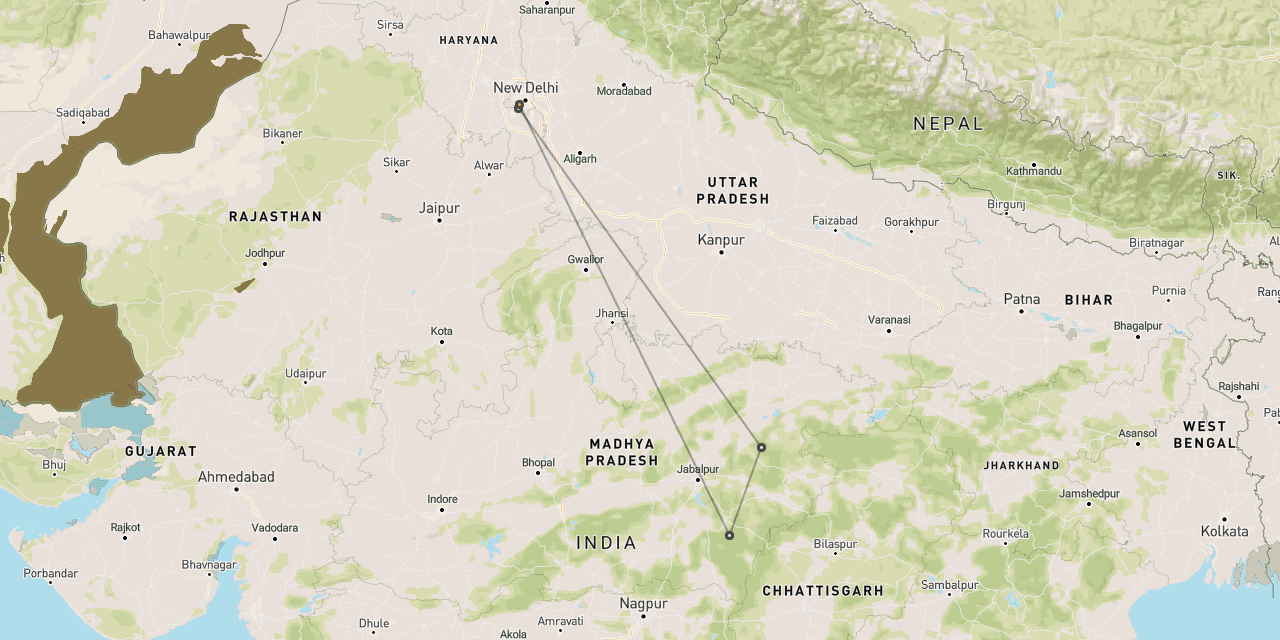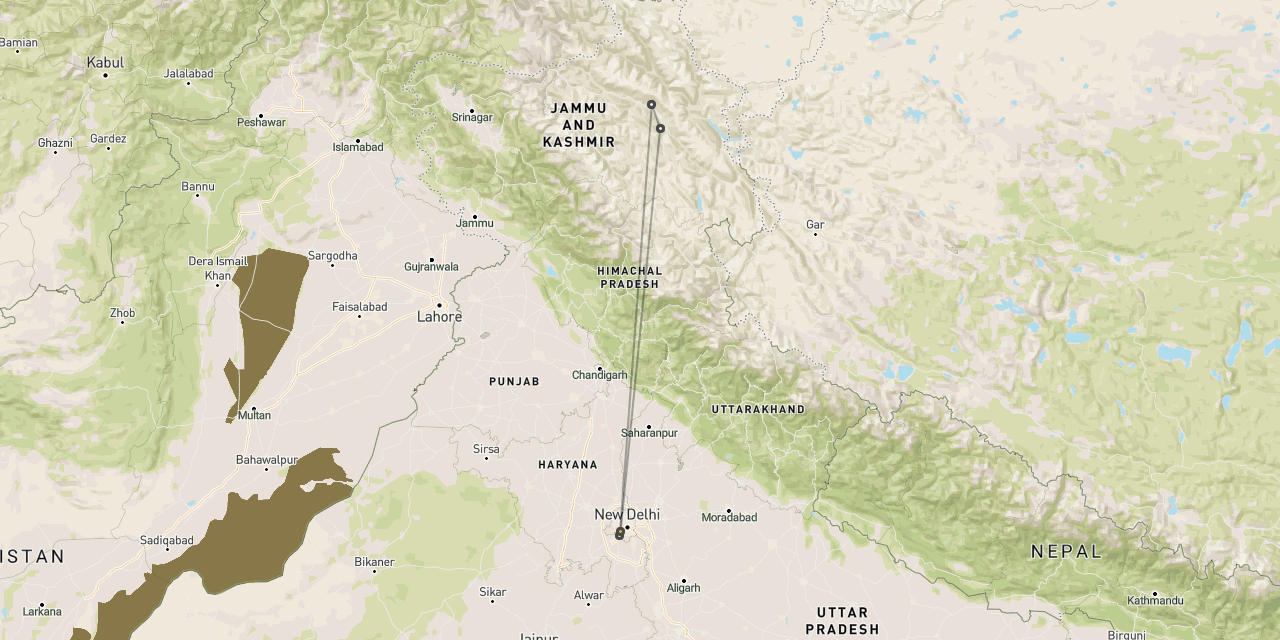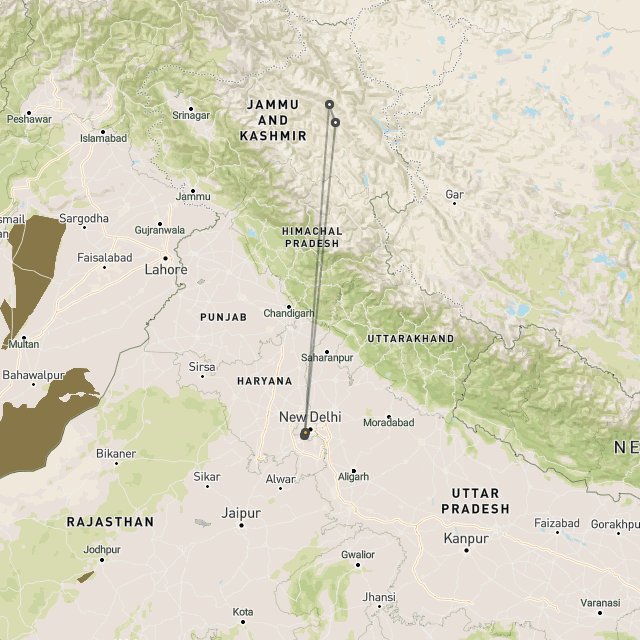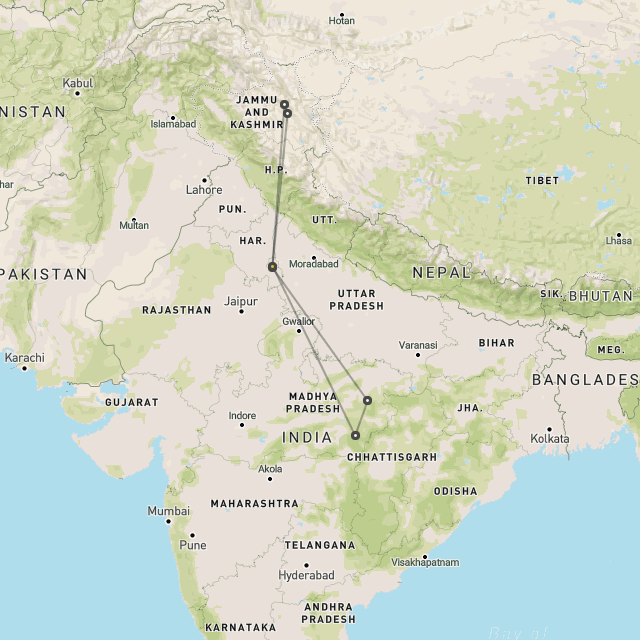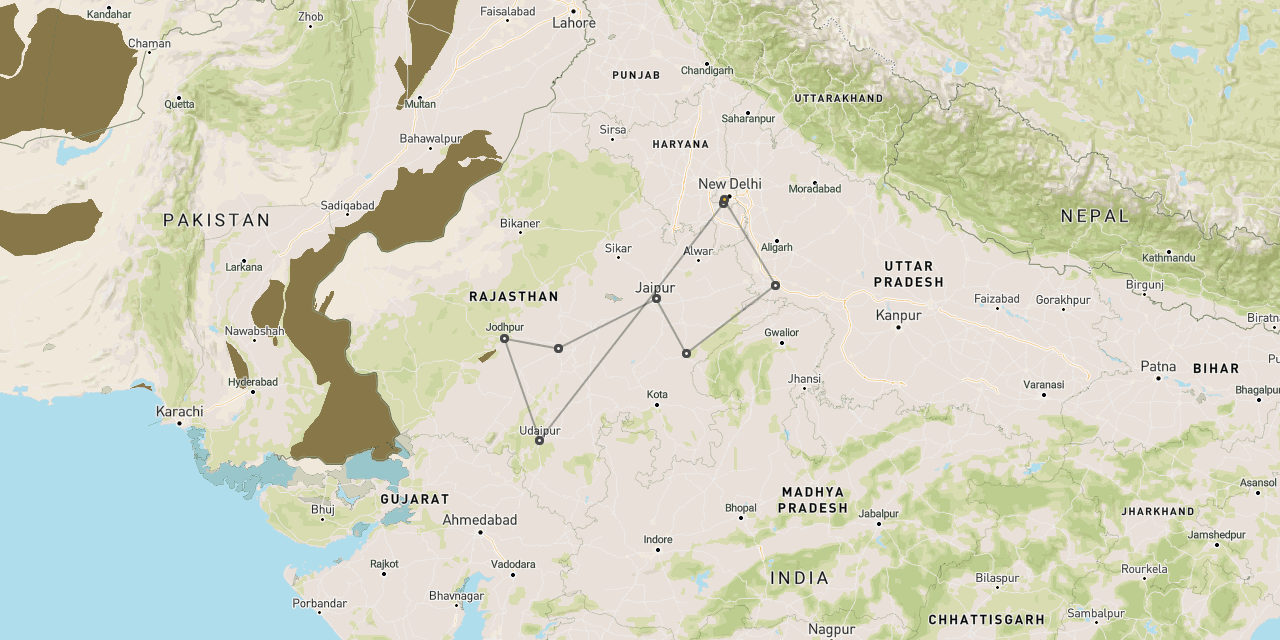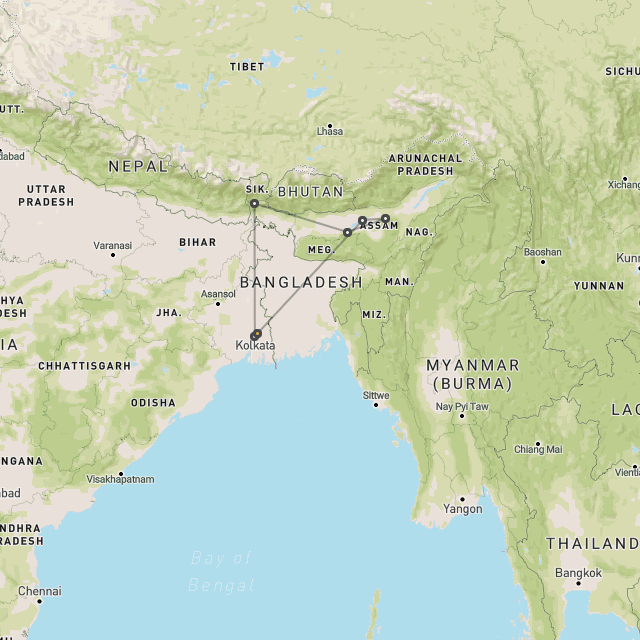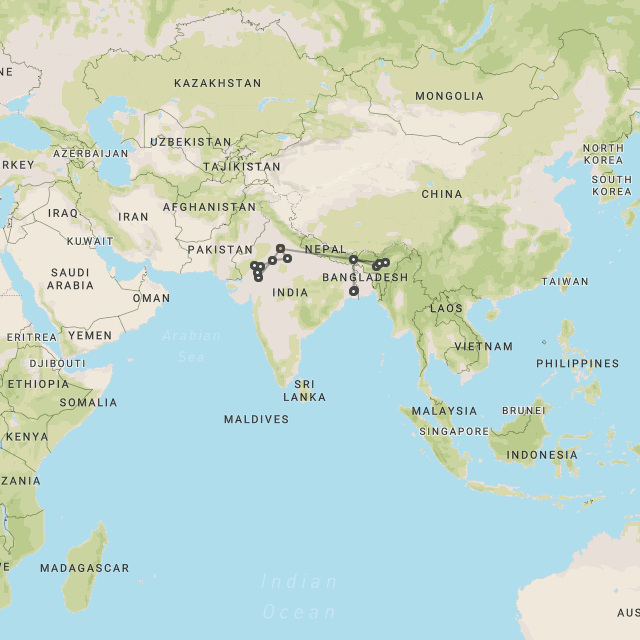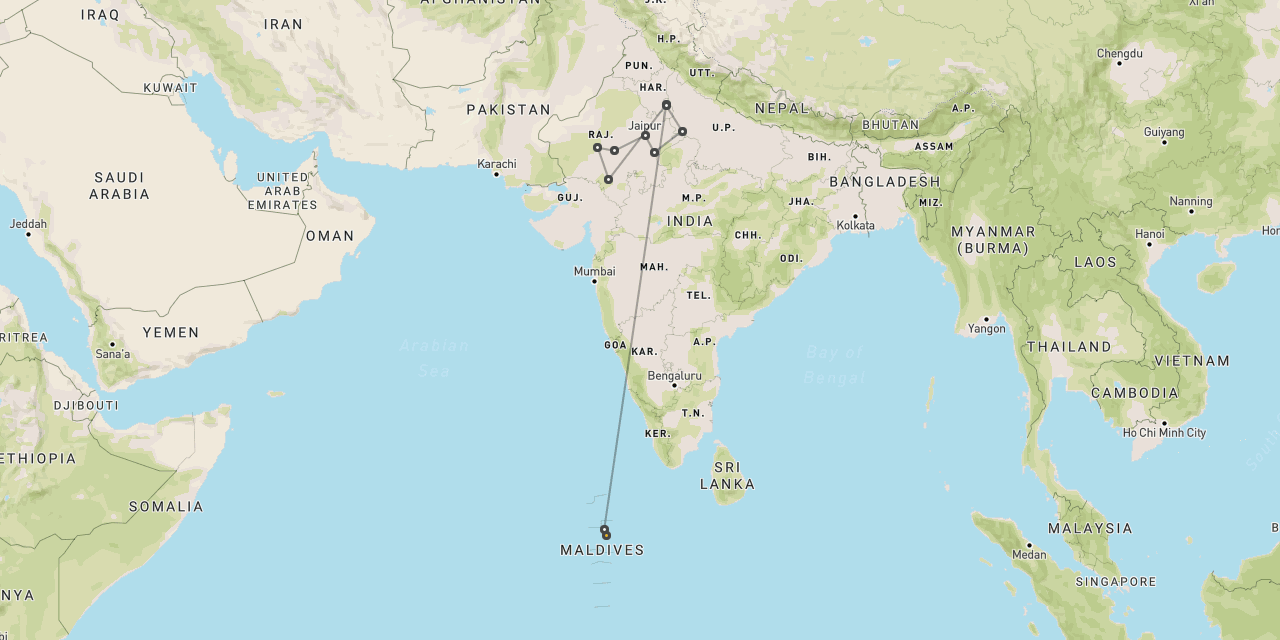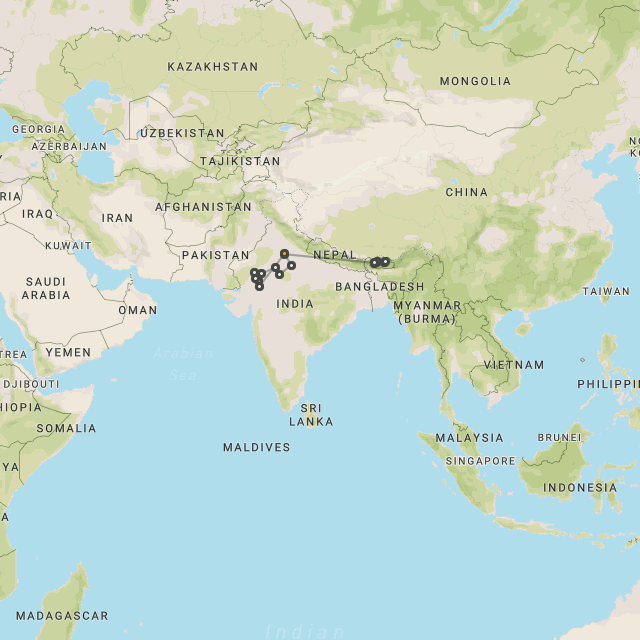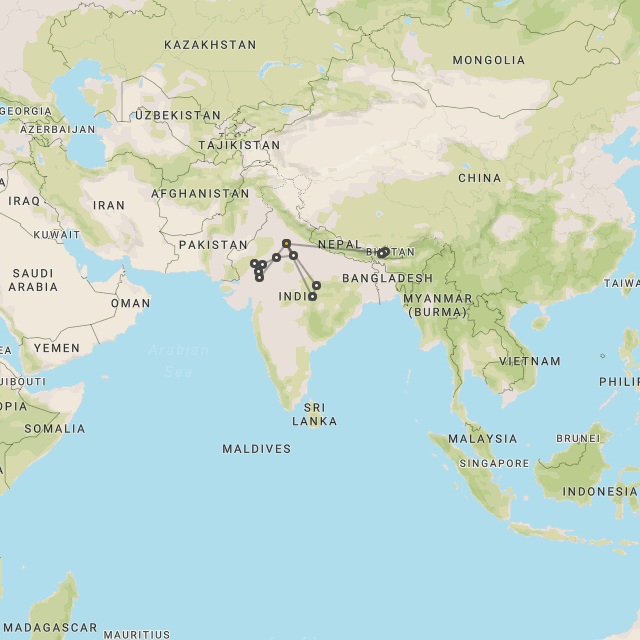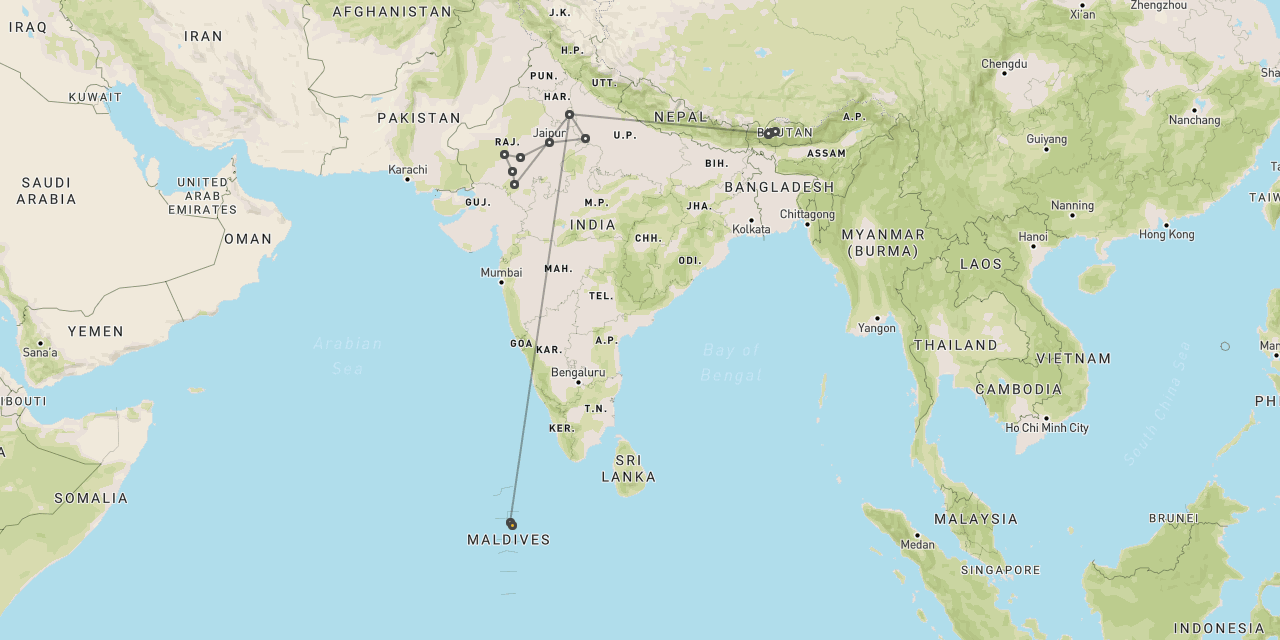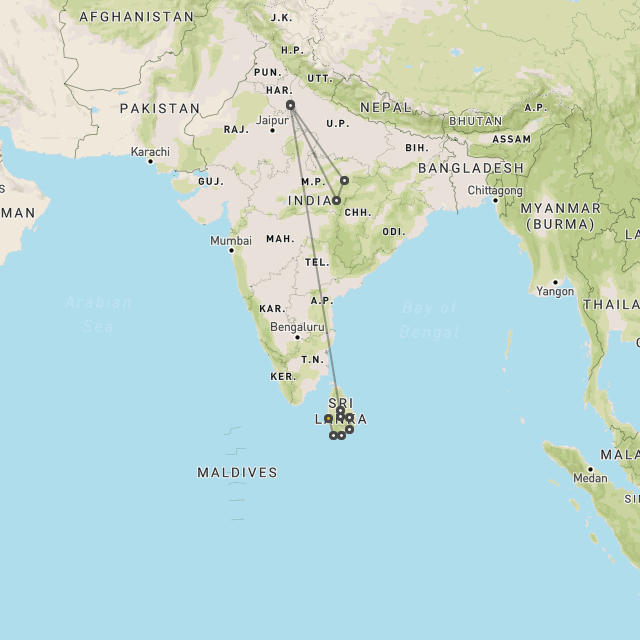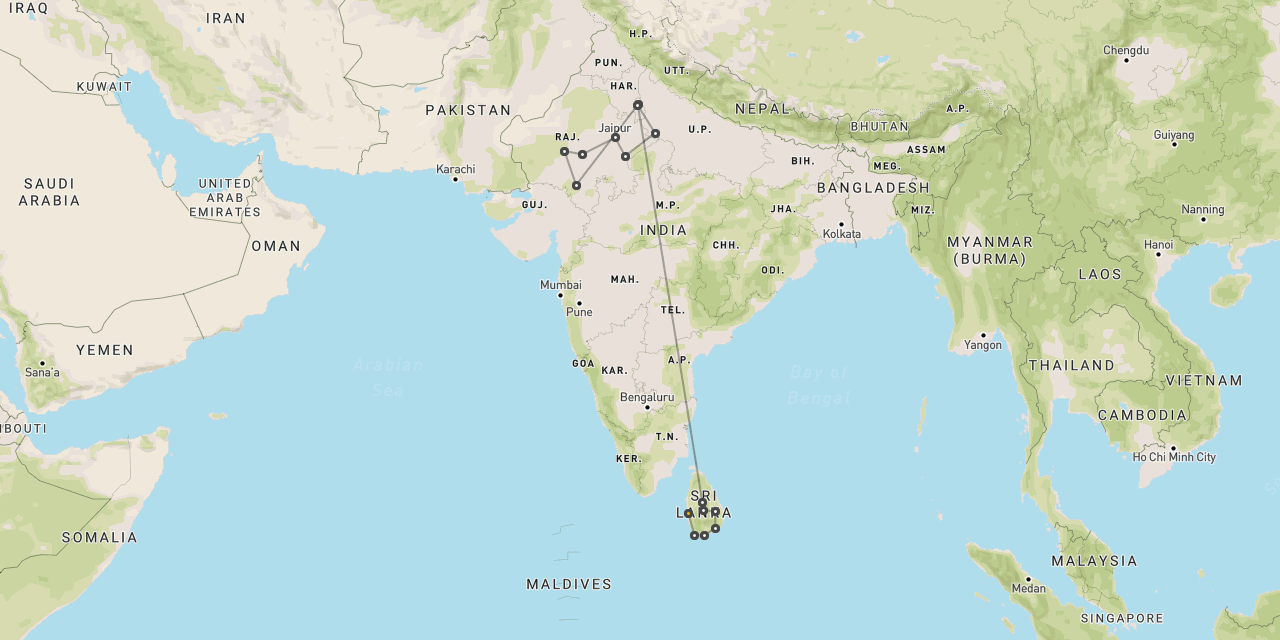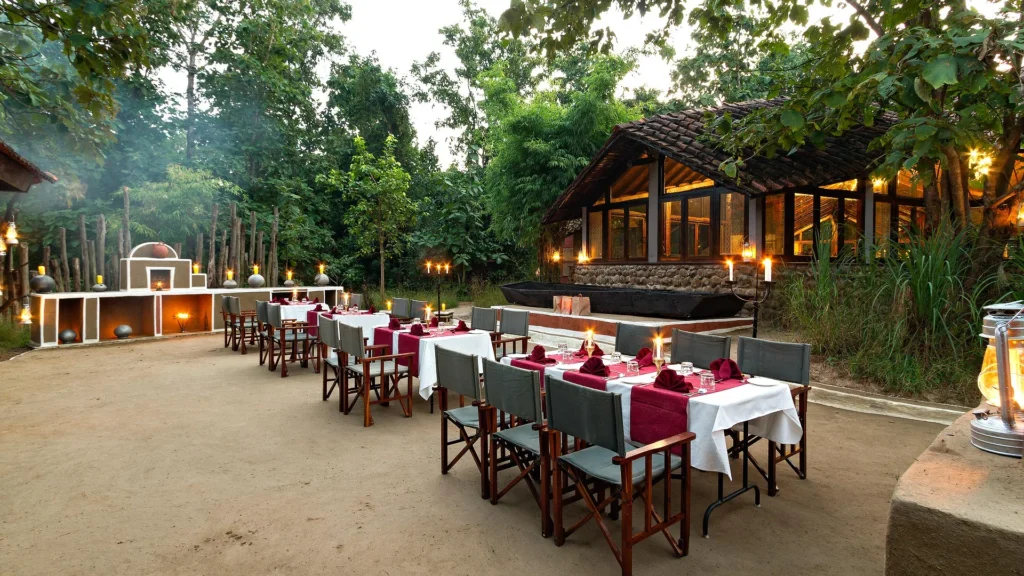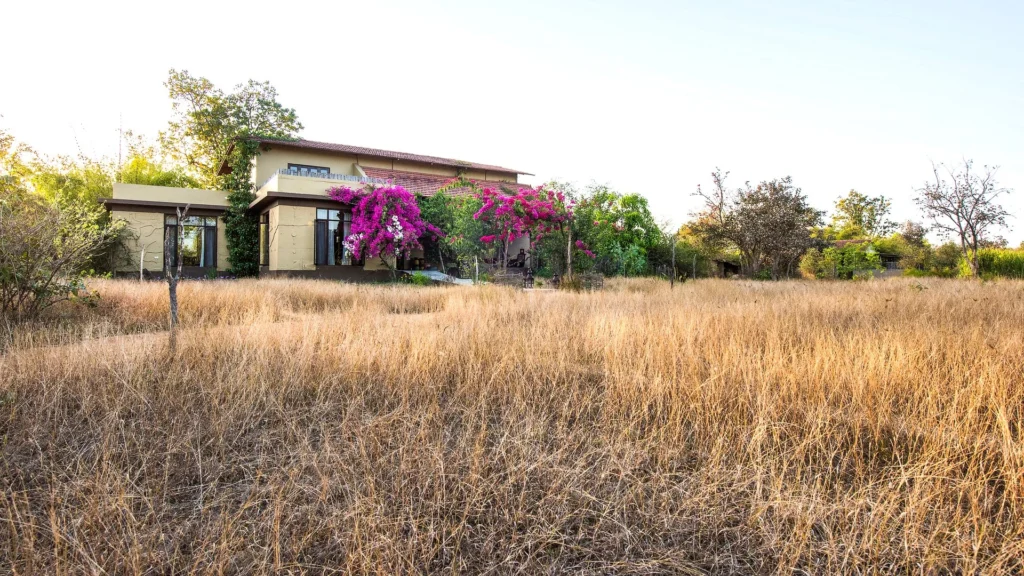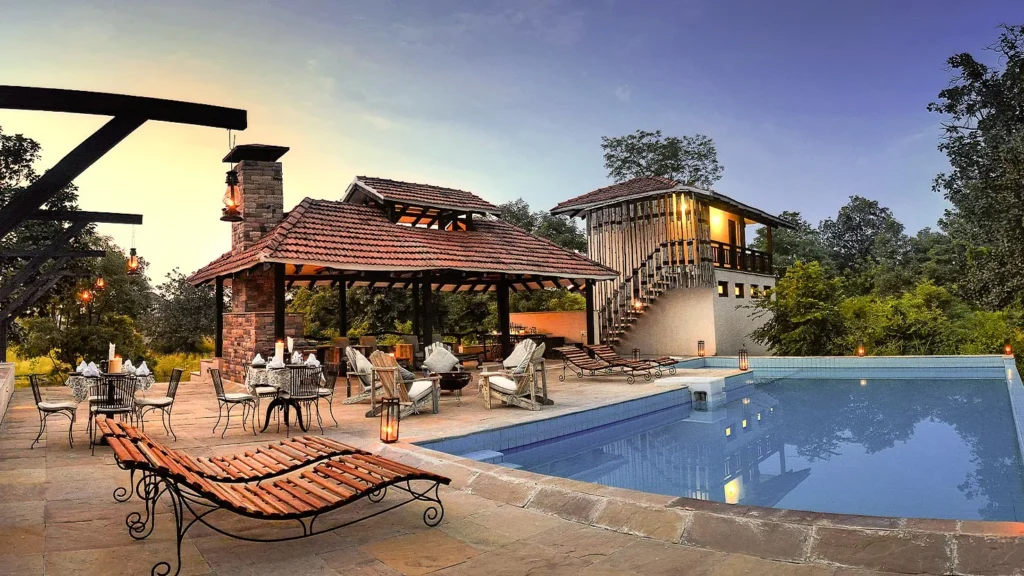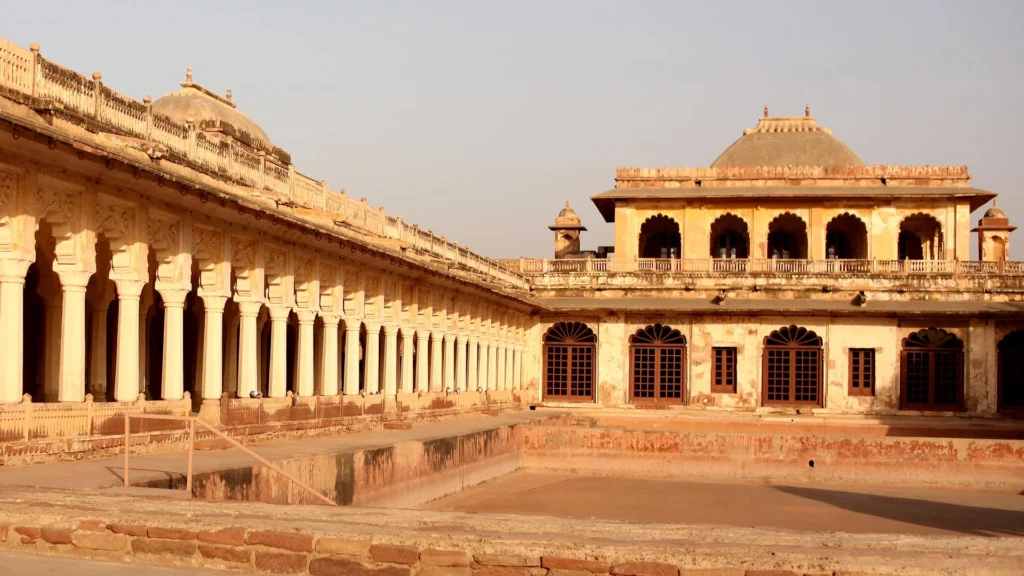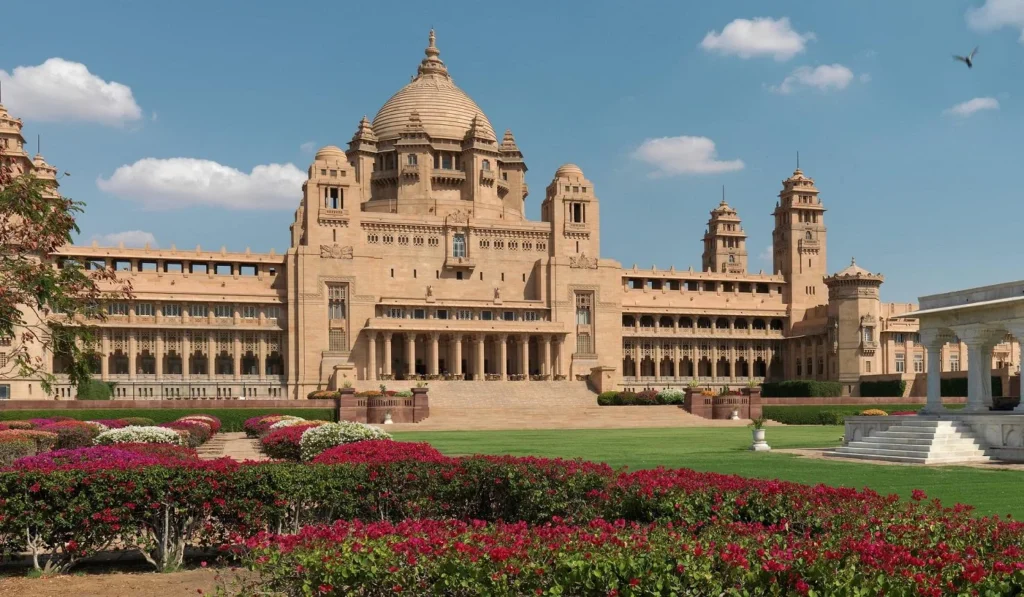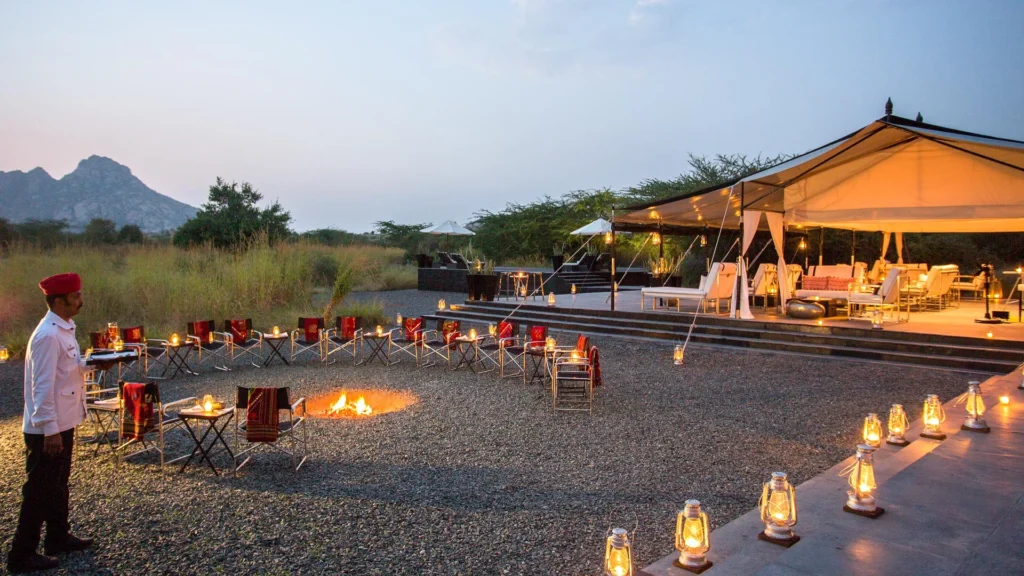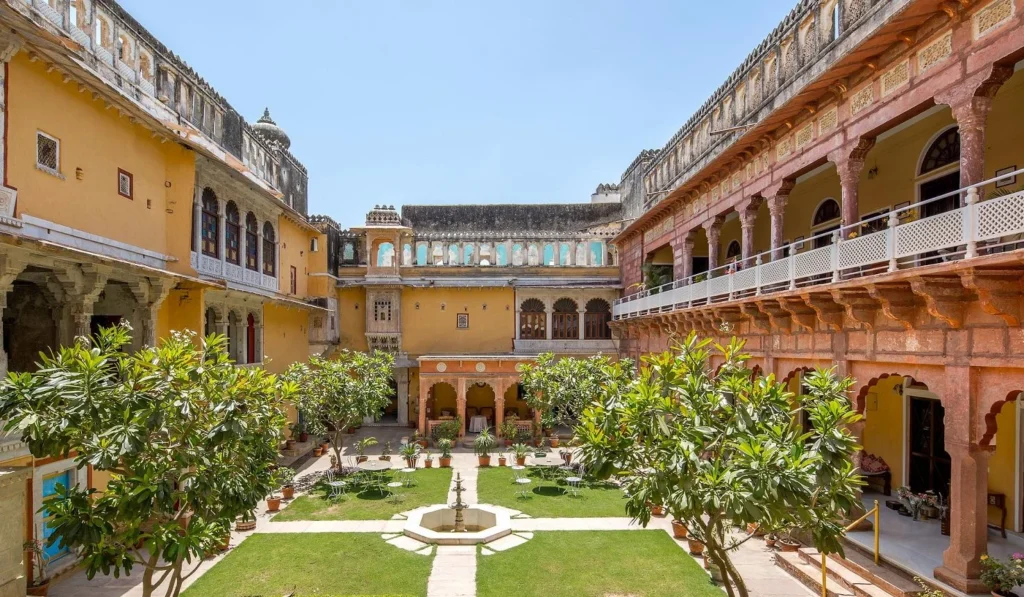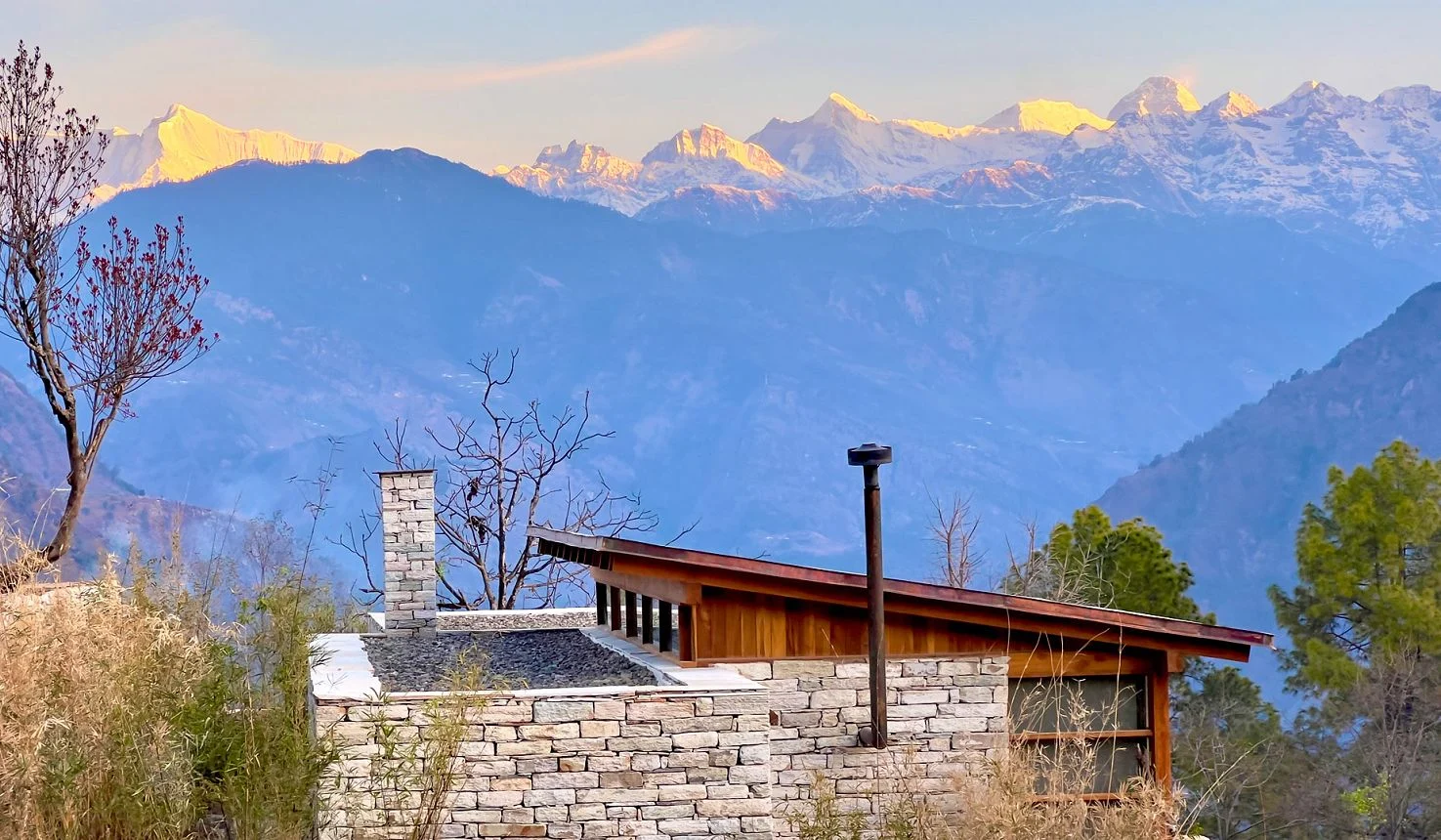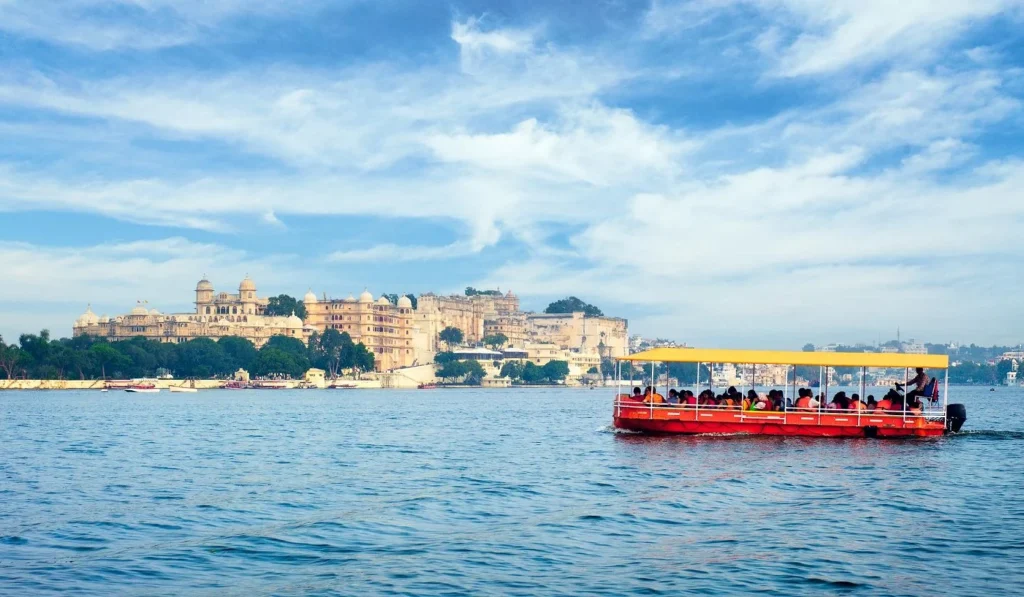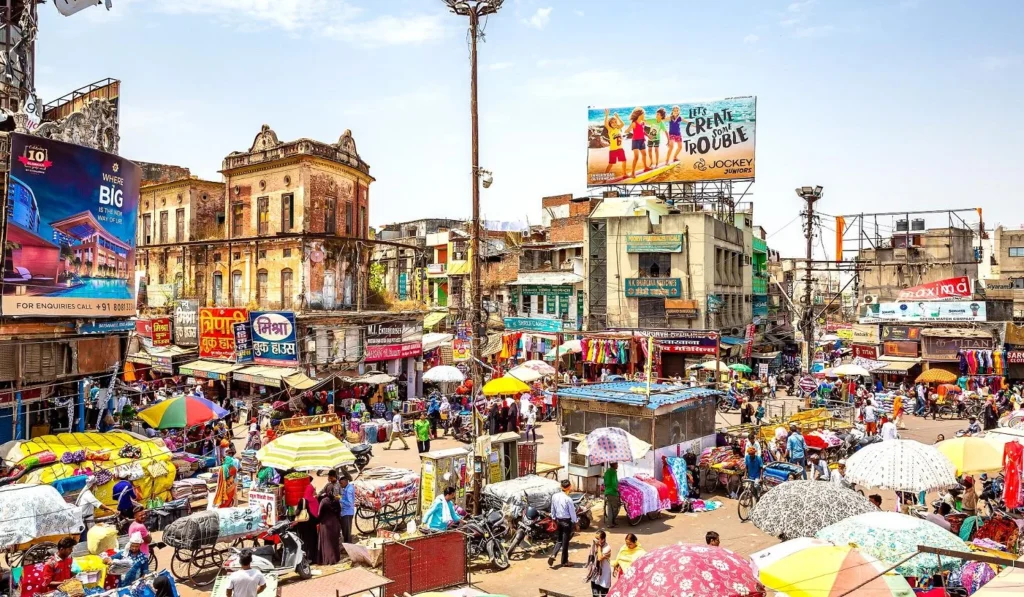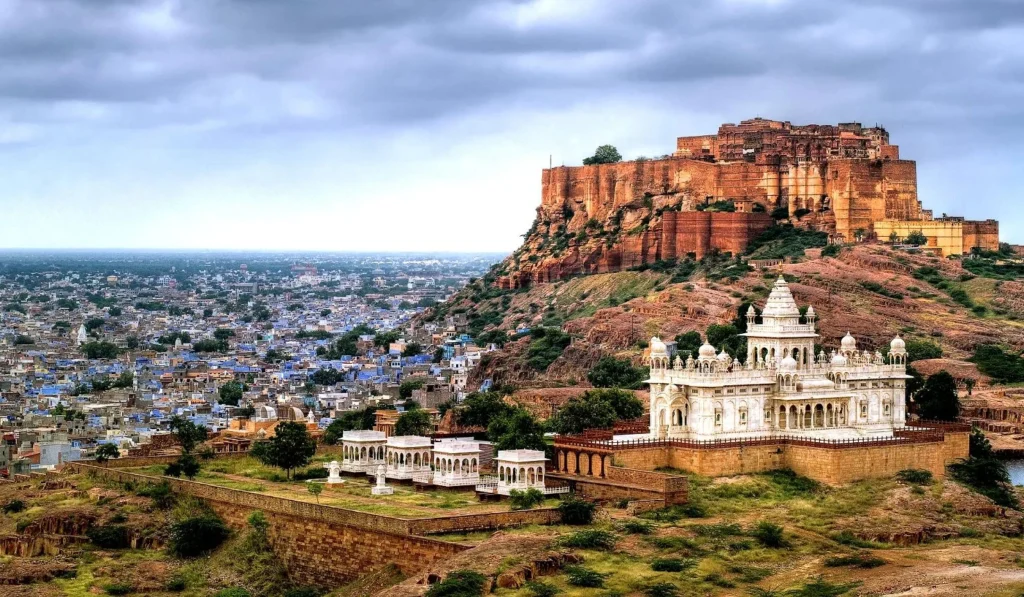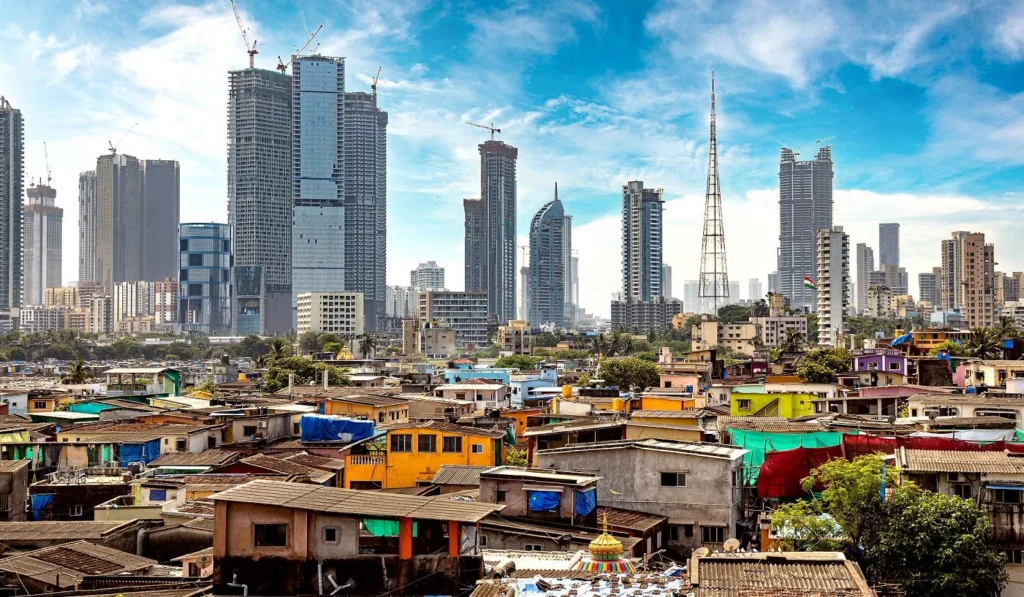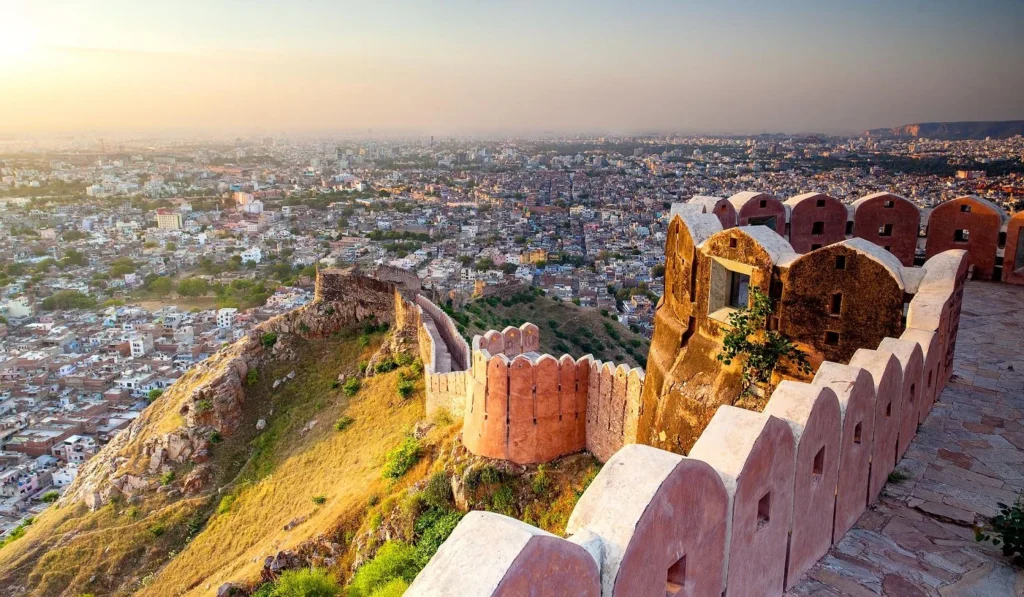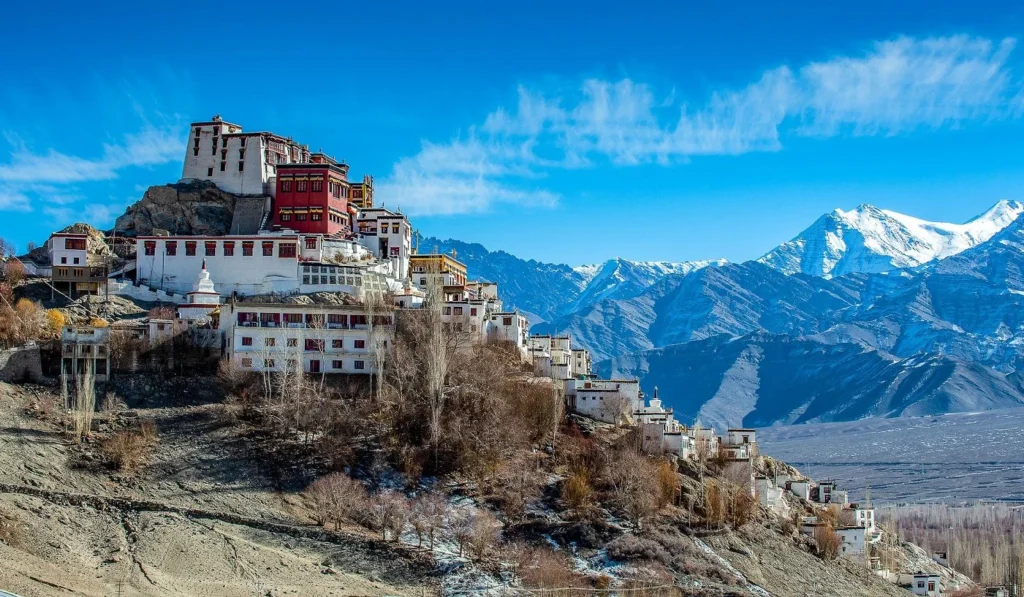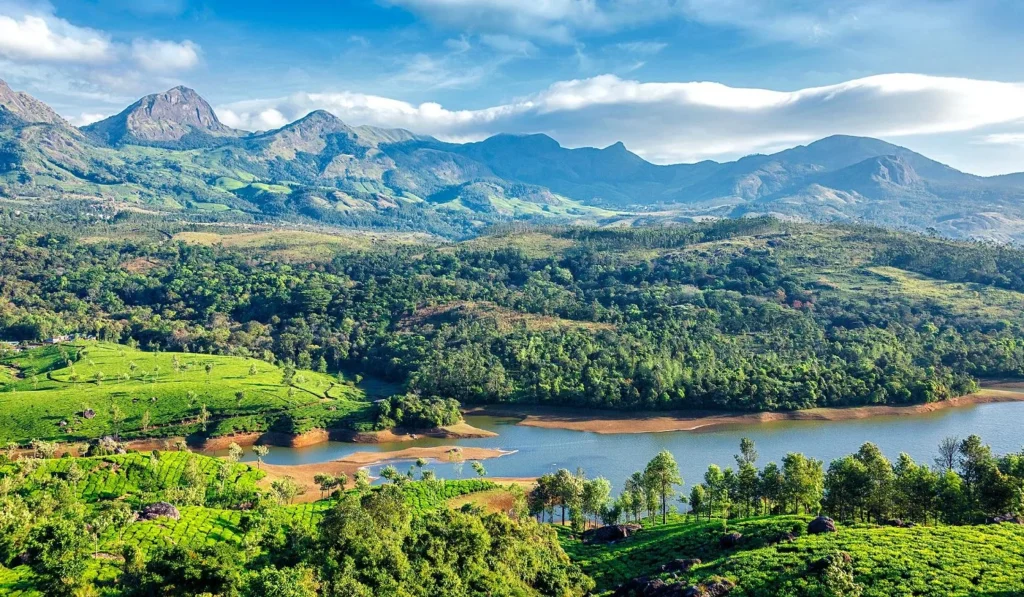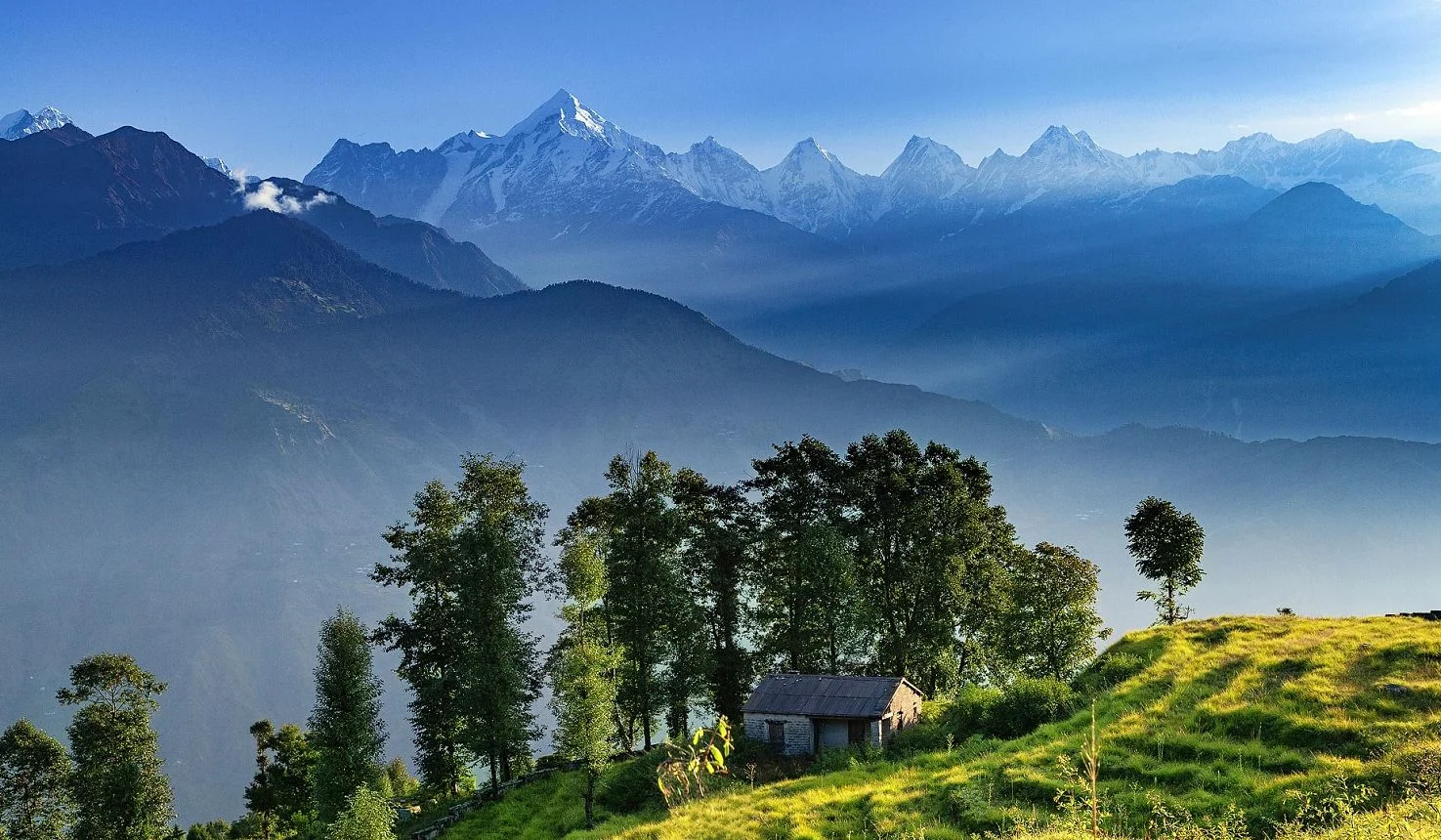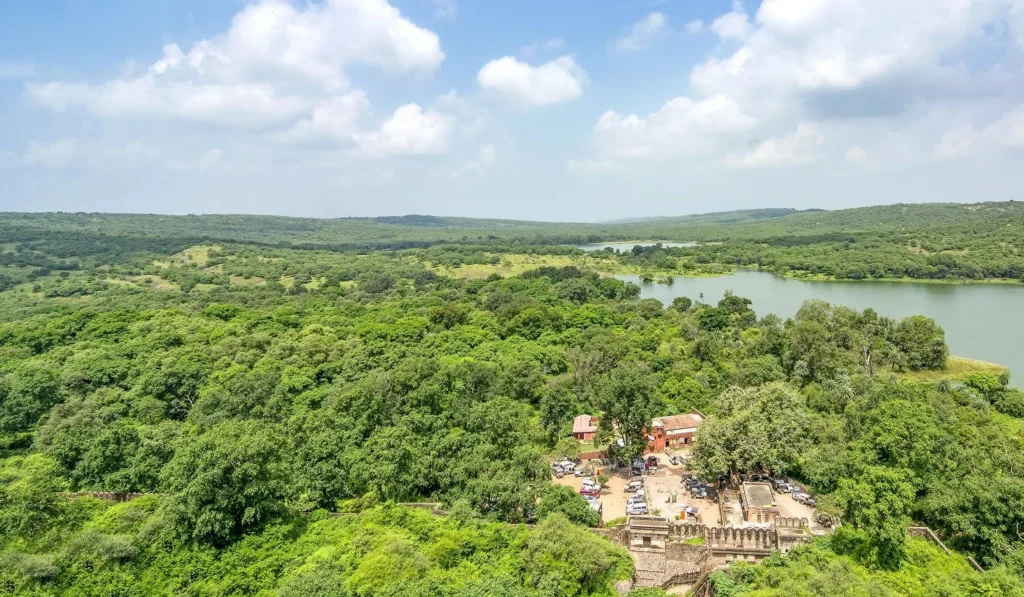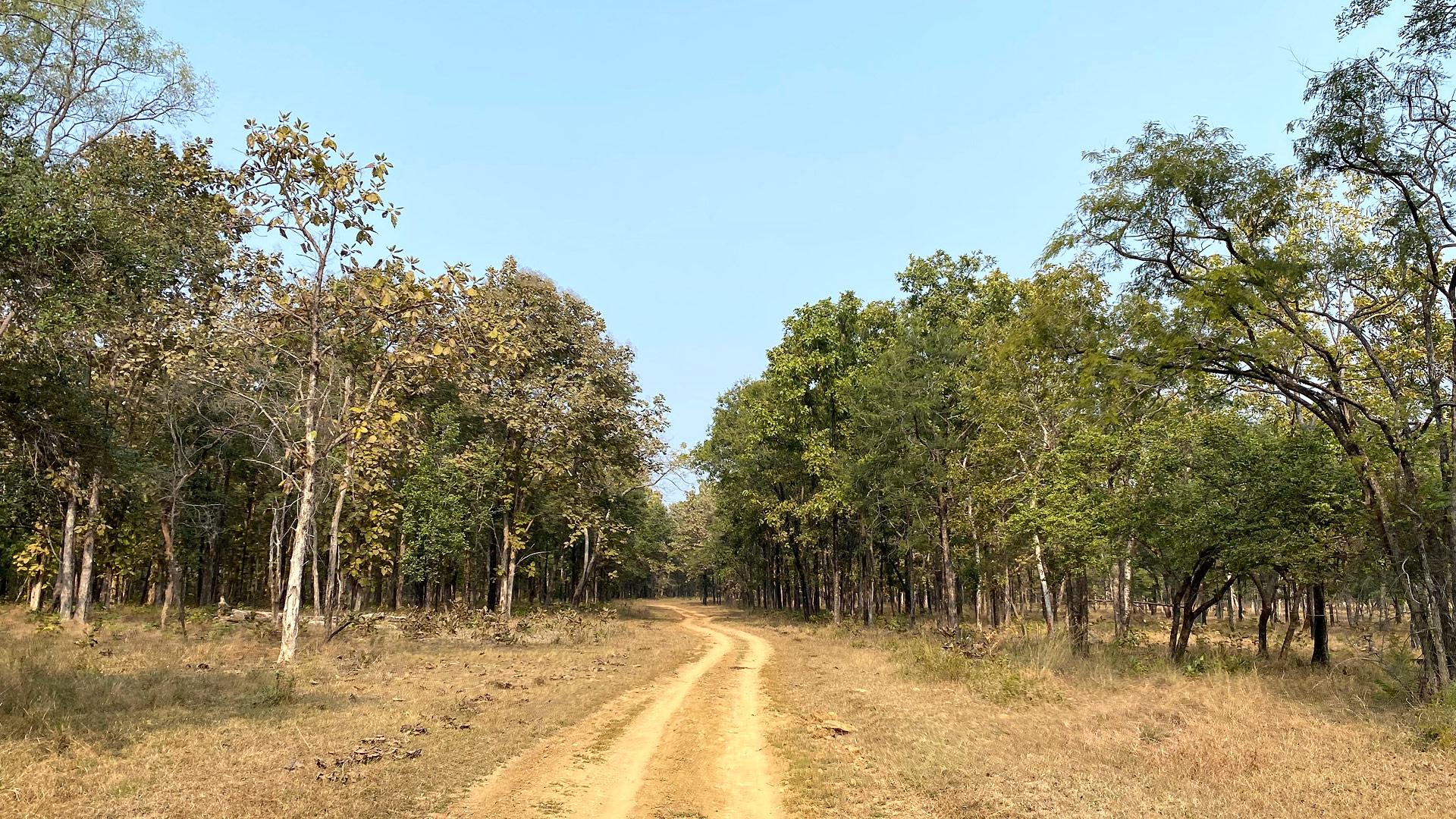
Safari to Satpura
Satpura
is a mountainous reserve
in central India
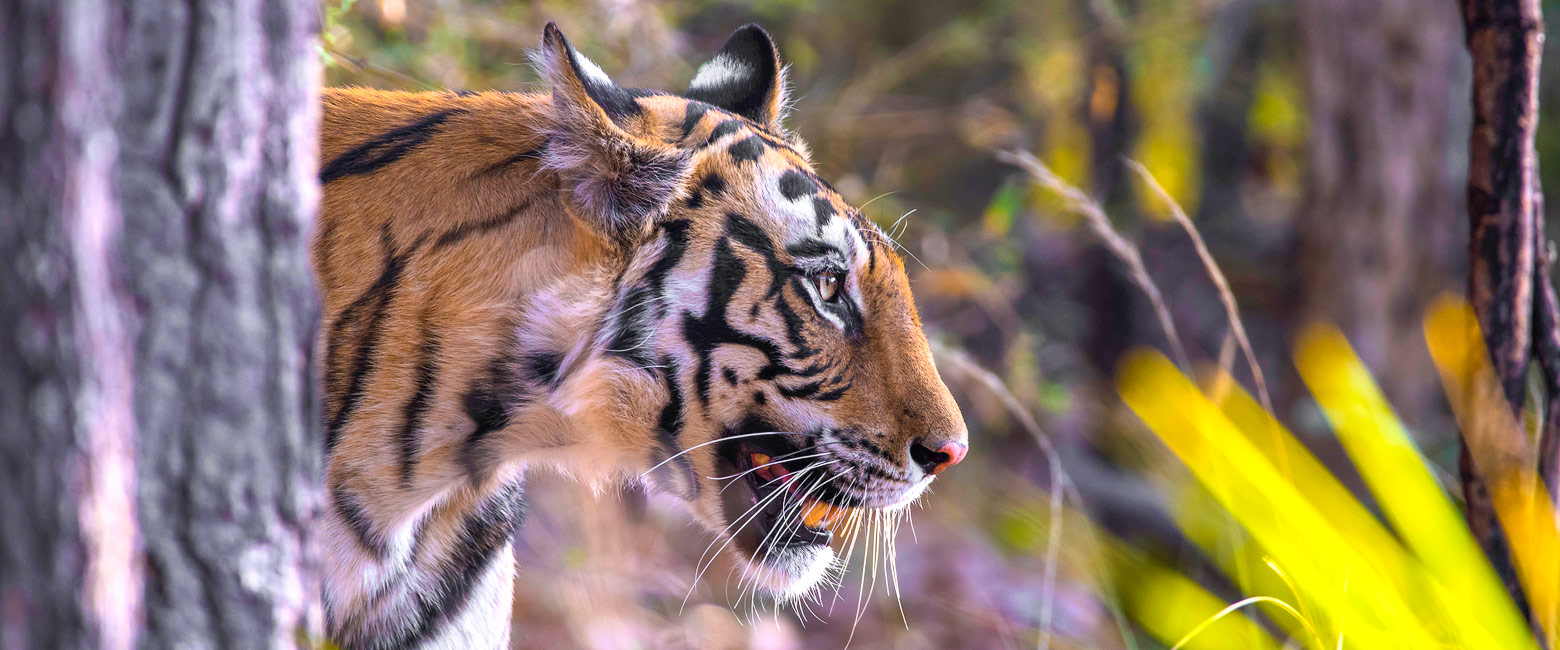
with kayaking and hiking
Satpura Tiger Reserve is located in the middle of Madhya Pradesh in Central India, roughly 800 km (500 miles) from New Delhi, Mumbai and Kolkata.
The area was first explored by the British when, in 1862, Captain James Forsyth of the Bengal Lancers pursued the Indian freedom fighter Tantya Tope into the wilderness.
The area was soon realised to be of great ecological importance and was one of the first parts of India to be declared as a Protected Forest Reserve. It was upgraded to national park status in 1981 and further enhanced to become Satpura Tiger Reserve in the year 2000.
Along with the adjoining Bori and Pachmarhi sanctuaries, the greater reserve now covers 2200 sq km (850 sq mi) of central highland ecosystems.
The landscapes are extremely rugged in parts, consisting of dramatic sandstone peaks, deep gorges and ravines. There are extensive areas of high open plateau, thick slopes covered in deciduous, dry deciduous and central Indian subtropical hill forests and scenic open grasslands.
Lying at the transition zone between the Eastern Himalayas and Western Ghats, the biodiversity here is particularly impressive, with over 1300 species of plants, 50 different mammals, 300 birds, 30 reptiles and 50 butterflies. Visitors are likely to encounter species here which they will not find in other reserves.
Predators include Bengal tigers, Indian leopards, jungle cats, desert cats, rusty spotted cats (the smallest cat in the world), striped hyenas, jackals, Bengal foxes, dholes (Asian wild dogs), mongooses, Indian civets and sloth bears.
Prey species include wild boars, rare barasinghas (swamp deers), gaurs (Indian bisons), sambar deers, chital deers, Indian muntjacs (barking deers), chausinghas (four-horned antelopes), nilgai (blue bulls), blackbucks and porcupines.
Primates include southern plains gray langurs and rhesus macaques. There are also flying squirrels and Indian giant squirrels.
When it comes to birding, the vertical scarps are home to numerous raptors like honey buzzards, black eagles, rufous-bellied eagles, Shahin falcons, Bonelli’s eagles, mountain hawk eagles and various vultures. Other iconic species include grey-and-red jungle fowls, Malabar pied hornbills, paradise flycatchers, bar-headed geese, pintails, garganeys, pochards and ruddy shelducks.
Although the wildlife in Satpura is very diverse, observing it can be a real challenge. Visitors are highly unlikely to encounter major predators, with sightings of tigers and leopards being extremely rare.
By way of compensation, visitor numbers are very low and you should often find yourselves alone when exploring the reserve.
Furthermore, rather than the very restrictive regulations in other national parks, here in Satpur there are possibilities for walking safari inside the main reserve, plus canoeing, kayaking and visits to various elevated hides.
Other highlights within the reserve include the historic Pandav Caves, the 35 metre (100’) Bee Waterfalls, the remote Shri Nagdwar Swami Temple and around fifty rock-art sites which are up to 10,000 years old.
The reserve, in common with all in Madhya Pradesh, is closed on Wednesday afternoons.
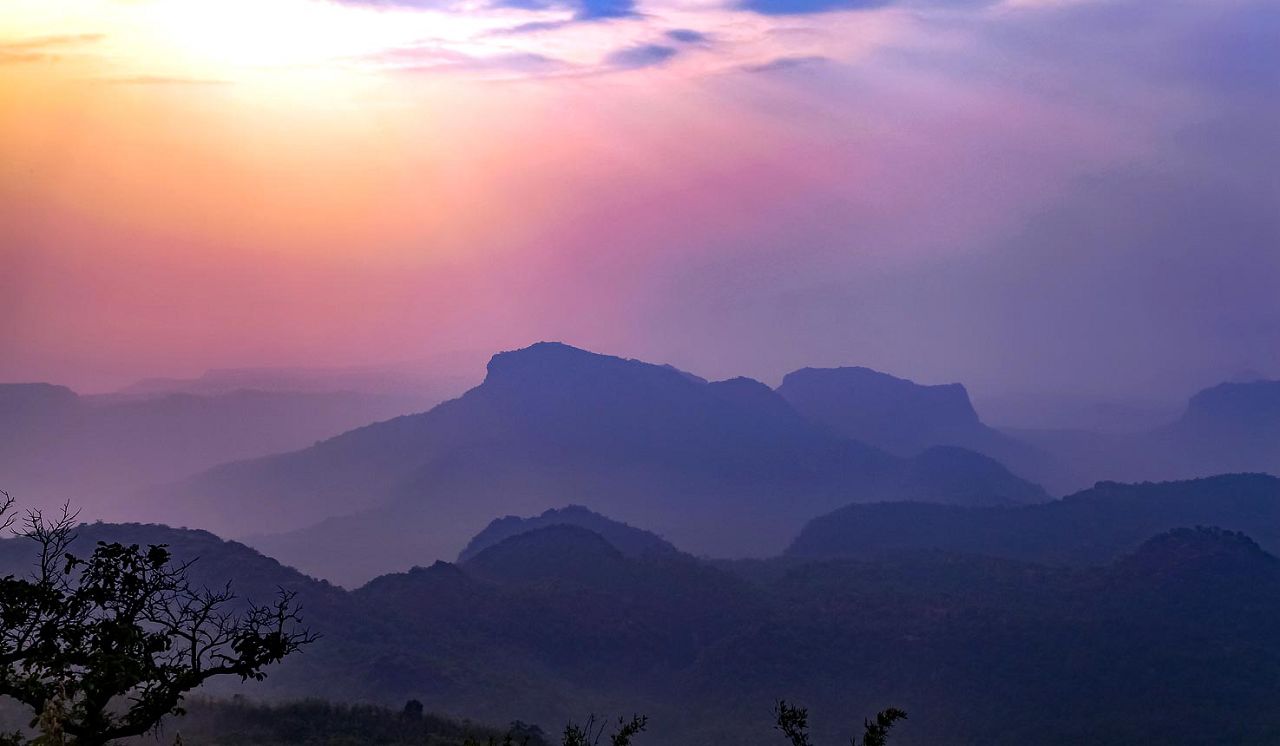
Gallery
Map
The best time of year to visit the Satpura area is generally considered to be during Oct-Jun, although there are considerable climatic variations over that period.
During October the daytime temperatures usually rise to around 25C/77F, whilst the nighttime low temperatures hold up around 12C/54F. However the rainfall is much lower, dropping to around 50mm (2”) per month. Sunshine is around 8 hours per day (around 75% of daylight hours), meaning that skies are usually clear. At this time of the year the national park is lush and green, with water-filled streams. The green backgrounds provide great contrast for wildlife photography, but the long-grasses and heavy foliage can be a major impediment to actually finding the animals.
During Nov-Jan the daytime temperatures usually rise to around 25C/77F, whilst the nighttime low temperatures plunge to around -3C/27F. There should be very little rainfall. Sunshine is around 8 hours per day (around 80% of daylight hours), meaning that skies are usually clear. At this time of the year the national park is still relatively lush and green, with enough humidity in the air for great polarised photography. However, the long-grasses and heavy foliage can remain a significant impediment to actually finding the animals. Obviously the morning safaris can be very cold and you should bring suitable clothing.
During Feb-Mar the daytime temperatures can climb steeply to around 34C/93F, whilst the nighttime low temperatures manage to drop to a comfortable 12C/54F. There should be very little rainfall. Sunshine is around 9 hours per day (around 75% of daylight hours), meaning that skies are usually clear. At this time of the year the national park is still surprisingly lush, although the grasses should have died back sufficiently to make wildlife viewing a little easier. However there should still be lots of flowers and fresh leaves around, with beautiful fragrances in the air.
During Apr-Jun the daytime temperatures can climb very steeply to around 42C/108F, whilst the nighttime low temperatures manage to drop to a reasonably comfortable 18C/64F. There should be very little rainfall up to June, when there can be 100mm (4”) over the course of the month. Sunshine is around 9 hours per day (around 70% of daylight hours), meaning that skies are usually clear, but this drops in June to 6 hours per day (45% of daylight hours) as the monsoon clouds gather. At this time of the year the national park is relatively dry, the long grasses should all have died back and the visibility for wildlife viewing should be better than usual. Additionally the animals tend to cluster around the few remaining water sources. Clearly the temperatures are an issue, as is the increased number of insects, repellent is strongly recommended.
During Jul-Sep, the national park closes, usually mid-June to mid-October, due to the very high monsoon rainfall, which typically leaps to over 500mm (20”) per month. Naturally the lodges all tend to close as well, so visiting during this period is really not an option.
Getting there
The Satpura area can be accessed in a number of different ways…
By air
The closest airports and their most common connections are …
- Bhopal : 100 km to the north : Delhi, Agra
- Jabalpur : 200 km to the northeast : Delhi, Agra
- Nagpur : 175 km to the southeast : Delhi, Mumbai, Pune, Kolkata, Bangalore, Doha
By train
The closest train stations and their most common connections are…
- Jabalpur : 200km to the northeast : Delhi
- Itarsi : 50km to the west : Mumbai, Delhi, Pune
By road
The area is rarely reached by road, since the distances are so large. However, having arrived in this part of India, exploring by road is quite popular, often combining some or all of the main national parks of Bandhavgarh, Kanha, Pench and Satpura.
Where to stay
The main cluster of lodges lies in the rural area to the north of the Madhai Gate into Satpura Tiger Reserve. The best of these are smaller properties, set on large forested plots and offering an unusually broad range of activities.
tends to feature in longer and more active trips
let us know your thoughts about India
and we will help you create the perfect trip
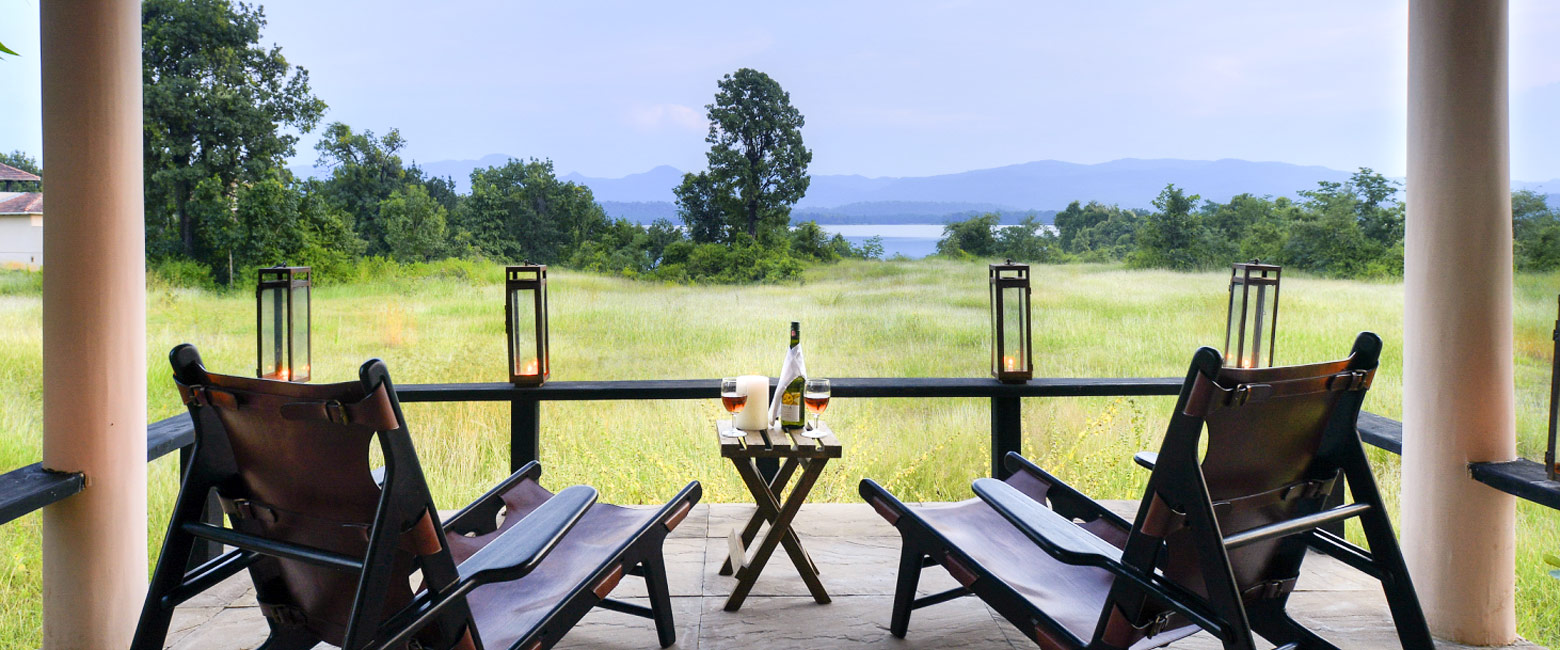
Extraordinary tailor-made adventures,
from earthy and edgy to easy and extravagant
From around USD 2500 per person, you set the ceiling
Sample Trips
Here are some of our popular trip shapes
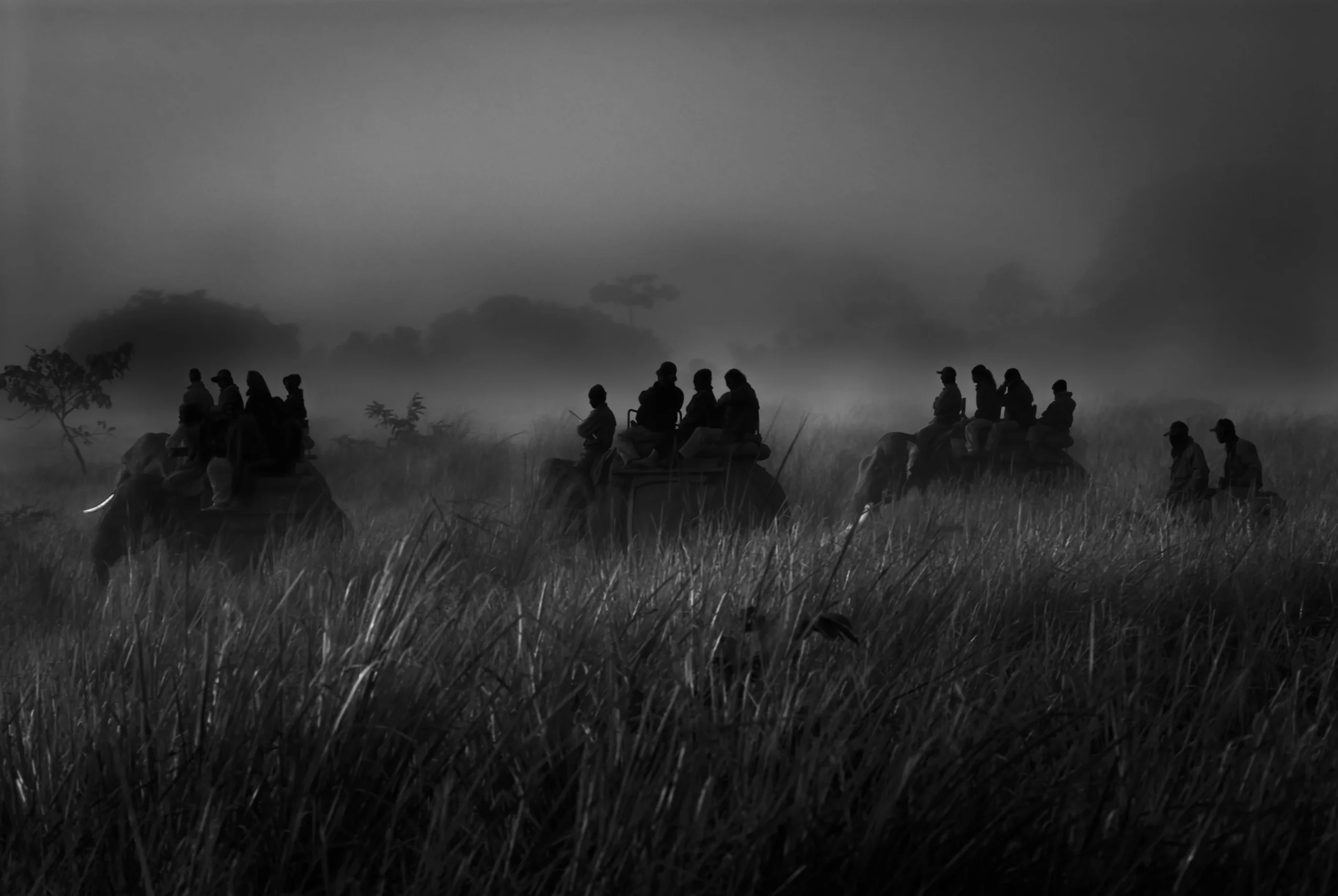
Get started on your trip
It’s never too soon to get in touch, we are here to help with every stage of your planning.
Best Lodges
We regularly inspect and photograph all of the the best lodges, to ensure that we always recommend the most suitable options
Key Locations
Take a look around related locations. Click ‘View more’ to explore locations further afield.













